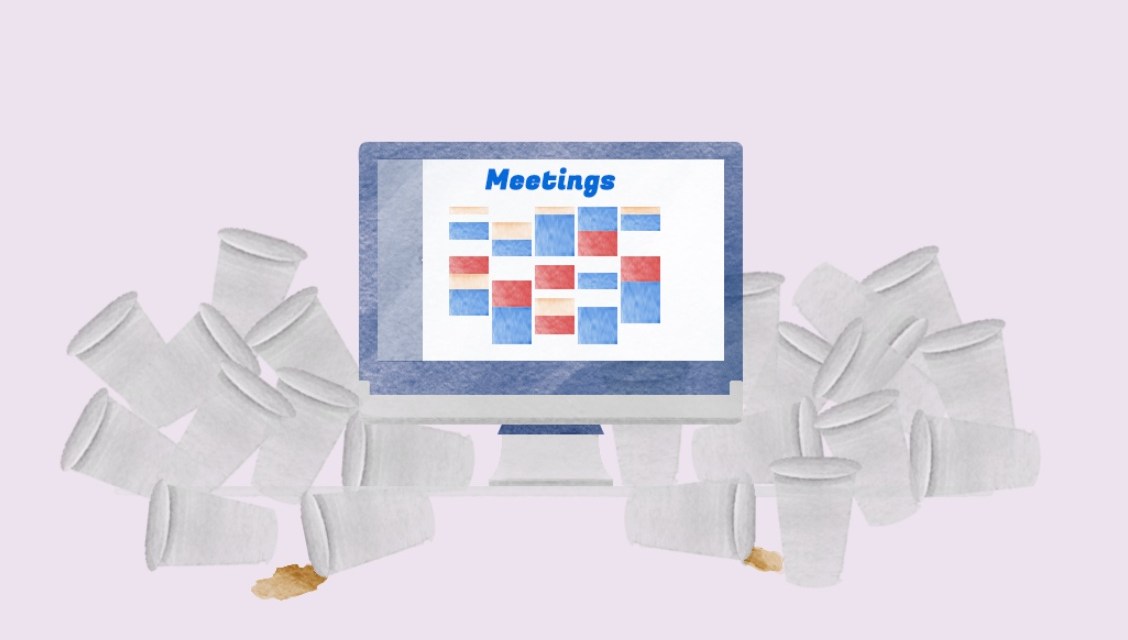Are metaverse meetings the answer to engaging hybrid workers?

Meetings culture for hybrid workers is broken, according to recent reports and analyses. Some 43% of 31,000 workers polled from across 31 countries by Microsoft earlier this year said they don’t feel included in meetings. Some organizations are turning to the metaverse to make meetings more engaging. But can that really be the answer long term?
It’s just over a year since Meta — formerly Facebook — bet large on the metaverse. It defined the metaverse as “a set of virtual spaces where you can create and explore with other people who aren’t in the same physical space as you … it’s about making the time you spend online more meaningful.”
Before the big rebrand, the organization announced its plan to hire 10,000 people in the European Union alone to develop the concept. It also invested $50 million in funding non-profit groups to help “build the metaverse responsibly.” Yet, tellingly, Meta conceded that it wouldn’t be created quickly. “Many of these products will only be fully realized in the next 10-15 years,” it warned.
But the metaverse was first thought of decades ago. The video game Second Life, launched in 2003, is usually referenced as the first metaverse. The term itself was coined in Neal Stephenson’s 1992 novel Snow Crash. In the sci-fi book, humans could purchase real estate in a virtual topography, which many businesses are doing now.
Despite its current low level of capability, numerous organizations have embraced the metaverse for meetings and not just for novelty value. One such business is Battenhall, which has created working spaces for employees in Meta’s Horizon Workrooms — a virtual reality meeting space it has developed — and an online game platform Roblox. “Meetings are one of the things that [the metaverse] is particularly useful for right now,” said London-based founder and CEO Drew Benvie.
It makes Zoom feel prehistoric
For the last ten months, Benvie has used weekly team meetings in the metaverse. “Staff members reported that it increases feelings of togetherness for those working from home over traditional phone calls or video meetings,” he said. “While the metaverse is generally considered to be in its infancy … it makes Zoom calls feel prehistoric.”
Moreover, it’s what many workers want, especially younger cohorts. So finds Owl Labs’ new State of Hybrid Work report, which polled over 2,000 full-time U.K. employees. Indeed, 42% of 18- to 24-year-olds said they want an office metaverse, and a further 23% would be keen to work in VR. “It’s clear that companies need to modernize their policies and technology to cater to this growing, digital-native generation,” said Frank Weishaupt, CEO of Owl Labs, a company that makes 360° video conferencing devices.
Other studies indicate a growing appetite for metaverse meetings. “The rapidly expanding metaverse presents an exciting alternative where employees can explore diverse virtual worlds, all from the comfort of their homes,” said Nathalie Vancluysen, head of extended reality at DXC Technology, a global IT services firm in the Fortune 500.
She pointed out a recent survey of DXC employees found a third are more engaged in their jobs because of the opportunity to meet in the metaverse, and 88% wanted the organization to invest more in the nascent technology. “Embracing the metaverse in the workplace can reinforce a sense of community and togetherness, which can sometimes be lost when working remotely,” Vancluysen said.
With employees dispersed across the globe, their avatars can all meet conveniently in one location, elevating the experience from a video conference, she added.
Leading by example
Unsurprisingly, Meta uses its Horizon Workrooms, the virtual reality meeting space it has developed. Brynn Harrington, Meta’s vp of people experience, recently told WorkLife that she uses Horizon Workrooms for her weekly team meeting. The experience is challenging to describe. “You have to try it, really — but you do feel like you are there, with colleagues,” she said.
Horizon Workrooms attendees sit around a table in the desired setting — the beach, perhaps. They can hear voices as one would in a room. For instance, if the person to your left is speaking, you will listen to them from that direction. “You can also see people’s facial expressions,” said Christine Trodella, head of business-to-business commercial sales at Meta’s Reality Labs and head of Workplace from Meta. “We are investing a lot in making these avatars personalized and real to people.”
However, plenty of skeptics lurk. “I don’t think the metaverse will solve any of the issues [around engaging remote workers],” said Ariel Camus, founder and CEO of Microverse, a school that trains software engineers. “In fact, I think it will create new problems because there are new technological barriers for people to join and participate as equals in meetings.”
Futurist and the chair of Mental Health First Aid England Adah Parris has similar reservations. Earlier in October, Meta announced its latest VR headset, Meta Quest Pro, which will cost at least $1,499.99 — almost four times as much as the Meta Quest 2, launched in 2020. “I worry that it is elitism,” she said. “If most people can’t access things like this, it will create a bigger divide.”
Technology vital for meeting equity
Helena Nimmo, CIO at Endava, a U.K. software company, had related concerns. “I see metaverse collaboration sitting in the space of being used exclusively by smaller teams for some years to come,” she said. “Not because it isn’t great — it is — but because it is not accessible for everyone, all the time.”
Nimmo added that back-to-back metaverse meetings would be health-damaging. “Some people consider headsets uncomfortable to the point of nausea,” she said. “It’s the future of hybrid collaboration; it just has some way to go.”
While the metaverse — or whatever you want to call it — is possibly not mature enough to fix the broken hybrid-working meeting culture, investing in technology solutions so everyone has the same tools is vital, stated Eamon O’Doherty, EMEA enterprise director at computer accessories firm Logitech.
“The key to achieving employee engagement for those working remotely is to make sure they are on an equal footing with those present in the office,” he said. “At a fundamental level, businesses must invest in technology that enables everyone to be seen and heard clearly.”
He added that remote workers should be equipped with higher-quality external webcams and headsets with noise-canceling technology — often, default computer webcams and mics are inadequate. And for office-bound workers, meeting rooms ought to have intuitive video conferencing tools so they can hear and see the facial expressions of colleagues.
“Non-verbal cues are crucial in building quality working relationships and boosting engagement,” said O’Doherty. Beyond this base level, organizations are investing in more advanced technology to improve the experience between in-person and remote meeting attendees.
“For scenarios like brainstorms and creative planning, advanced technology like artificial intelligence-powered whiteboard cameras can also give remote workers a real-time, unobstructed view of a whiteboard of ideas to engage with,” O’Doherty added.
Less is more
Perhaps the best solution is fewer meetings. As John Kenneth Galbraith said: “Meetings are indispensable when you don’t want to do anything.” The Canadian-American economist died in 2006, aged 97, but his tongue-in-cheek observation is even more resonant in the digital age.
With so many meetings scheduled — in the metaverse, using video conferencing technology, in-person events, or other kinds—increasingly, people “confuse being busy with being productive,” argued Ryan Hopkins, global workplace of the future lead at Finastra, a global fintech company. “I want to uncouple these calls and meetings from achieving what we want to achieve.”
Many progressive businesses realize that less is more in terms of meeting effectiveness. For example, work management platform Asana conducted an internal meeting experiment called “Meeting Doomsday” earlier this year. The idea was to empower participants to reimagine meetings, including transforming longer-than-necessary meetings into 15-minute sessions.
After wiping their meeting schedules, employees were told to ponder their cleansed calendars for 48 hours. Only then could they add meetings back to their diaries — but only the ones they classed as vital. The experiment cleared up calendar clutter and tackled meeting bloat, leading to three-and-a-half weeks of saved time per person per year.
“A lot of 30-minute meetings became 25-or even 15-minute meetings [and] a lot of weekly meetings became every other week or monthly,” said Rebecca Hinds, California-based head of the Work Innovation Lab, Asana’s internal think tank that works with academic researchers.
“It forces you to completely rethink your meetings and rebuild your calendar from the ground up in a way that you just can’t do when you’re looking at meetings one by one,” Hinds added.


